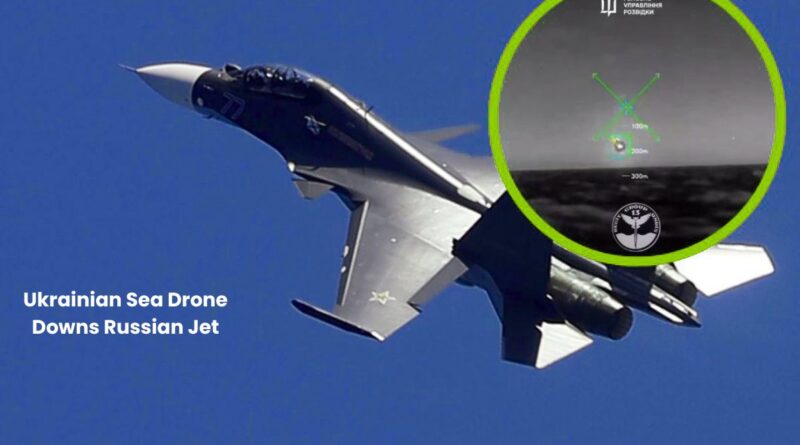Ukrainian Sea Drone Downs Russian Jet: A Historic First in Naval Warfare
Ukrainian Sea Drone Downs Russian Jet: A Historic First in Naval Warfare
Introduction: A New Era in Naval Combat
In a groundbreaking military achievement, Ukraine has claimed the successful downing of a Russian Su-30 fighter jet using a sea-based drone, marking the first known instance of a manned combat aircraft being destroyed by a maritime unmanned system. This unprecedented event underscores the evolving dynamics of modern warfare, where technological innovation is redefining traditional combat paradigms.
The Incident: Details of the Engagement
On May 2, 2025, Ukraine’s Defence Intelligence (DIU) announced that its special operations unit, Group 13, in coordination with the Security Service of Ukraine and the Defence Forces, executed a successful strike against a Russian Su-30 fighter jet over the Black Sea near Novorossiisk. The operation involved a missile-armed sea drone, reportedly a Magura V5, which launched an R-73 surface-to-air missile, resulting in the destruction of the $50 million aircraft.
Dramatic footage released by Ukrainian authorities shows the moment the drone fires the missile, leading to the jet being engulfed in flames before crashing into the sea. While the Russian Defence Ministry has not officially commented on the incident, a pro-Kremlin blogger acknowledged the loss, noting that the pilots survived.
Technological Advancements: The Magura V5 Sea Drone
The Magura V5 sea drone represents a significant leap in unmanned naval warfare capabilities. Equipped with advanced navigation systems and missile-launching capabilities, the drone can operate autonomously or be remotely controlled, allowing for precision strikes without risking human lives. Its successful deployment in this operation highlights the strategic value of integrating unmanned systems into modern military arsenals.
Strategic Implications: Shifting the Balance in the Black Sea
The successful downing of a Russian fighter jet by a Ukrainian sea drone has profound strategic implications. It demonstrates Ukraine’s growing proficiency in leveraging asymmetric warfare tactics to counter a technologically superior adversary. This development could potentially alter the balance of power in the Black Sea region, challenging Russia’s naval dominance and forcing a reevaluation of aerial operations over contested waters.
Historical Context: Evolution of Unmanned Systems in Warfare
The use of unmanned systems in military operations has evolved significantly over the past decades. From reconnaissance missions to targeted strikes, drones have become integral to modern warfare. However, the use of a sea-based drone to down a manned fighter jet marks a new milestone, showcasing the expanding capabilities and roles of unmanned systems in combat scenarios.
International Reactions: Global Perspectives on the Incident
The international community has closely monitored the developments surrounding this incident. While some nations view Ukraine’s innovative use of technology as a testament to its resilience and adaptability, others express concern over the escalating sophistication of unmanned warfare. The incident has sparked discussions on the ethical and strategic implications of deploying autonomous systems in combat.
Future Outlook: The Role of Unmanned Systems in Modern Warfare
The successful deployment of the Magura V5 sea drone sets a precedent for future military engagements. As nations invest in the development of advanced unmanned systems, the nature of warfare is poised to change dramatically. The integration of AI, machine learning, and autonomous decision-making in combat scenarios raises questions about accountability, control, and the potential for unintended escalations.
Conclusion: A Turning Point in Military History
The downing of a Russian Su-30 fighter jet by a Ukrainian sea drone signifies a turning point in military history. It highlights the transformative impact of technology on warfare and underscores the importance of innovation in achieving strategic objectives. As the conflict continues, the role of unmanned systems is likely to expand, reshaping the future of military engagements.
